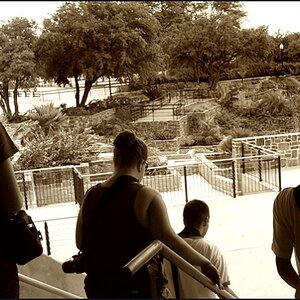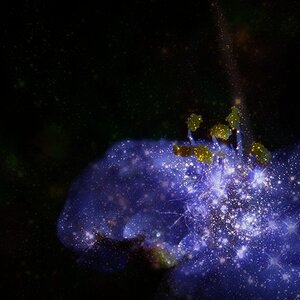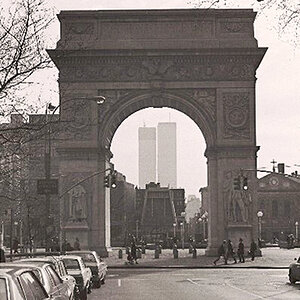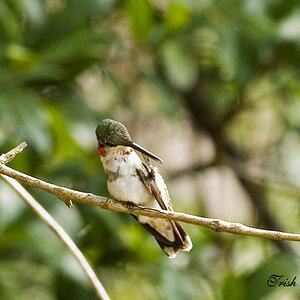Compaq
Been spending a lot of time on here!
- Joined
- Aug 29, 2010
- Messages
- 3,400
- Reaction score
- 657
- Location
- Norway
- Can others edit my Photos
- Photos OK to edit
A rangefinder camera can be looked upon a device that calculates (apprx) distance to the subject - hence why it's called a "rangefinder". The camera measures distance by the means of triangulation - if you know three things about a triangle, you can find any angle and length of the side.

In this (poorly made) illustration, A and B are the viewfinder and the rangefinder windows respectively on a rangefinder camera. b is the baseline of the triangle, the length between the viewfinder and the rangefinder window. I think the effective length is also related to the magnification of the viewfinder. Many are .7x, some 1:1 etc. Alpha represents the angle BAS, beta the angle ABS and S is simply the subject. d is the distance from film plane to subject, if I'm not much mistaken. The formula for finding d:

So, we know the baseline, but how does the camera figure out the angles? As you understand, these angles will vary depending on the distance d: shorter distances means smaller angles, longer distances means bigger angles. So, how can the camera figure out those angles?
I was thinking that maybe the angle of the prism that moves the superimposed image from the rangefinder window has something to say, but I can't really figure it out.
Another thing I thought was this: as we turn the focusing ring, the prism turns (at least on coupled rangefinders). The angle from rangefinder window to subject does logically not change, but the angle of the prism does. What I'm thinking is that maybe as we start at closest focusing range and move toward infinite distance, we go through all angles in-between. When the two images overlap, we must have stopped at the correct correct angle. Basically what I'm trying to say, is this:

But I have no idea, really, and was wondering if anyone here knows how the camera pulls the necessary information to calculate the distance to the subject.

In this (poorly made) illustration, A and B are the viewfinder and the rangefinder windows respectively on a rangefinder camera. b is the baseline of the triangle, the length between the viewfinder and the rangefinder window. I think the effective length is also related to the magnification of the viewfinder. Many are .7x, some 1:1 etc. Alpha represents the angle BAS, beta the angle ABS and S is simply the subject. d is the distance from film plane to subject, if I'm not much mistaken. The formula for finding d:

So, we know the baseline, but how does the camera figure out the angles? As you understand, these angles will vary depending on the distance d: shorter distances means smaller angles, longer distances means bigger angles. So, how can the camera figure out those angles?
I was thinking that maybe the angle of the prism that moves the superimposed image from the rangefinder window has something to say, but I can't really figure it out.
Another thing I thought was this: as we turn the focusing ring, the prism turns (at least on coupled rangefinders). The angle from rangefinder window to subject does logically not change, but the angle of the prism does. What I'm thinking is that maybe as we start at closest focusing range and move toward infinite distance, we go through all angles in-between. When the two images overlap, we must have stopped at the correct correct angle. Basically what I'm trying to say, is this:

But I have no idea, really, and was wondering if anyone here knows how the camera pulls the necessary information to calculate the distance to the subject.



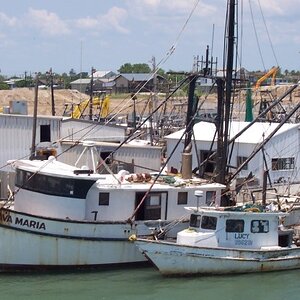
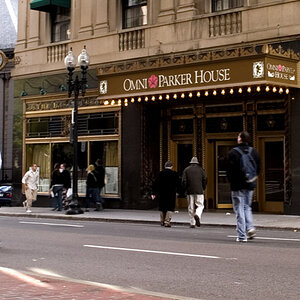
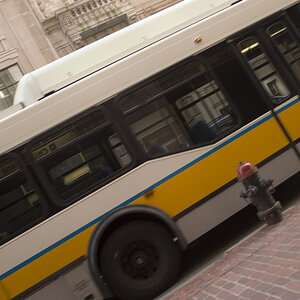
![[No title]](/data/xfmg/thumbnail/41/41764-1385c153e9fea917b7efea0bbde7eefe.jpg?1619739885)


![[No title]](/data/xfmg/thumbnail/41/41762-58f644e561db7433f4f566037a965217.jpg?1619739884)
